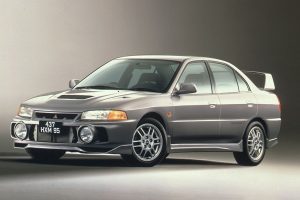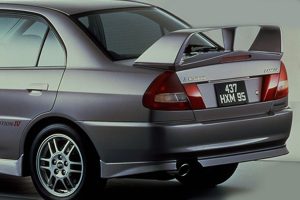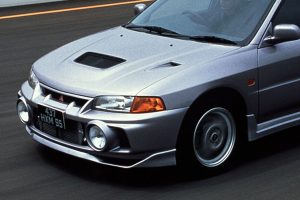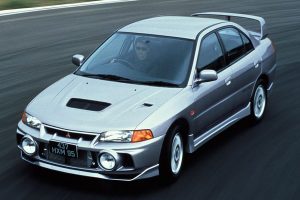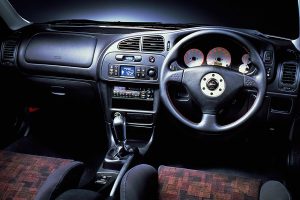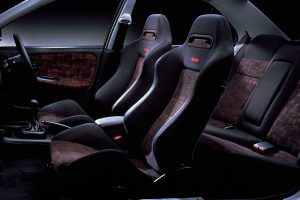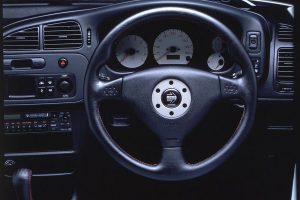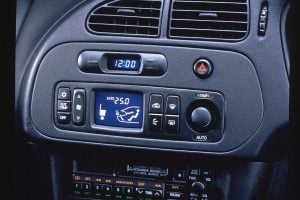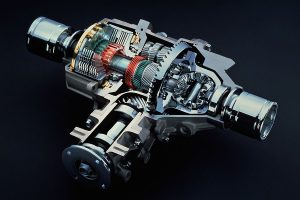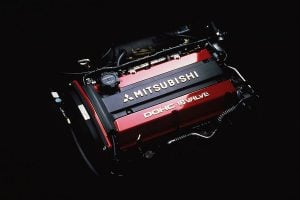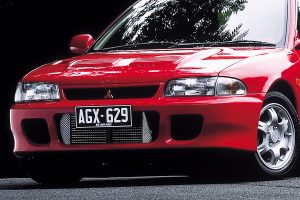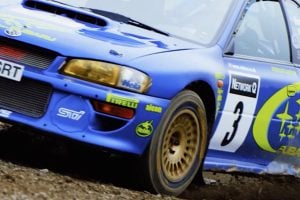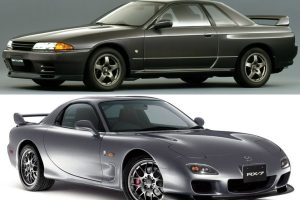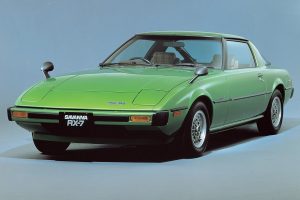With the Evo IV, Mitsubishi’s rally fighter entered a new phase.
Next level of AWD control
The Lancer Evolution is a series of AWD sports sedans Mitsubishi launched in 1992 to win the World Rally Championship. Despite its history ended in 2016 with the final model, Lancer Evolution X Final Edition, the car still has popularity from not only rallyists worldwide but also from Japanese car enthusiasts who are familiar with the car through movies and video games.
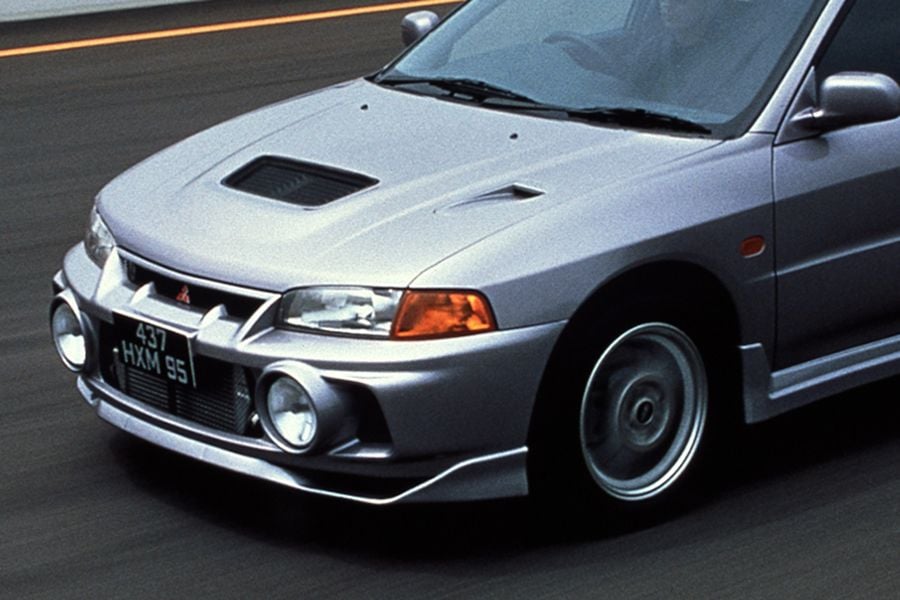
In 1996, Mitsubishi launched the fourth model of the Lancer Evolution, the Lancer Evolution IV. With the Evo IV, the series entered into the second generation which uses the fifth generation Lancer as a base body. To match the changes for the base body used, Evo I~III is often called the first generation, Evo IV~VI as the second generation, Evo VII~IX as the third generation, and the very last Evo X as the fourth generation.
Japan encountered a collapse in its economic bubble in the early 1990s.
To save development costs, Mitsubishi developed its new Lancer sharing major components with the Mirage Sedan. But as for the Lancer Evolution, the car was not affected by the company’s cost reduction.
With a completely new body, an engine layout 180° reversed from the previous model, and a newly developed multi-link suspension, the car gained improved performance.
The new model was fitted with a new system called the “Active Yaw Control (AYC)”. This is a device that electronically controls power distribution to both rear wheels to improve traction, braking, and handling at corners. Although the AYC installed in the Evo IV was immature and had problems, Mitsubishi continued to improve the system with the following generations and became one of the greatest features the Evo had.
The car was the last “compact” Lancer Evolution according to Japan’s body size regulation. In Japan, passenger cars are divided into two types. A compact body size limited to 4.7 m (15.4 ft) long, 1.7 m (5.6 ft) wide, 2 m (6.6 ft) high, and with engine displacement 2,000 cc (120 cu in) or under is classified as “Small Size Passenger Vehicle” and is often called as “5 number” because of the license plate prefix. And on the contrary, cars bigger than any of the above are called “3 number”.
This Evo IV was the last Evo to be a “5 number”, thus making it the last compact Evo in its whole history.
Like the previous models, the same 4G63 inline-4 turbocharged engine was installed but with an updated version. The Evo IV’s 4G63 engine boasted a maximum output of 280 ps thanks to numerous updates like a new high-speed cam profile, forged pistons, and a twin-scroll turbocharger. Its output was at the full limit of “gentlemen’s agreement” among Japanese carmakers at that time.
Tire treads were widened by 5 mm, and the wheel size has been increased from 15 inches to 16 inches, adopting a new 205/50R16 tire. This allowed the Evo IV to efficiently transmit its power to the road.
The model had two trims: the GSR, which can be also used for daily use, and the RS, a stripped-down base model for competition use. The latter model featured a close-ratio transmission and a torque-sensitive helical LSD, which made the Evo IV the first production car to be equipped with that type of an LSD.
These improvements not only improved the poor weight distribution that had been an issue in the first generation, but the latest electronic control parts also made the car even faster. This showed how much effort Mitsubishi put into the model to seriously aim for the WRC.
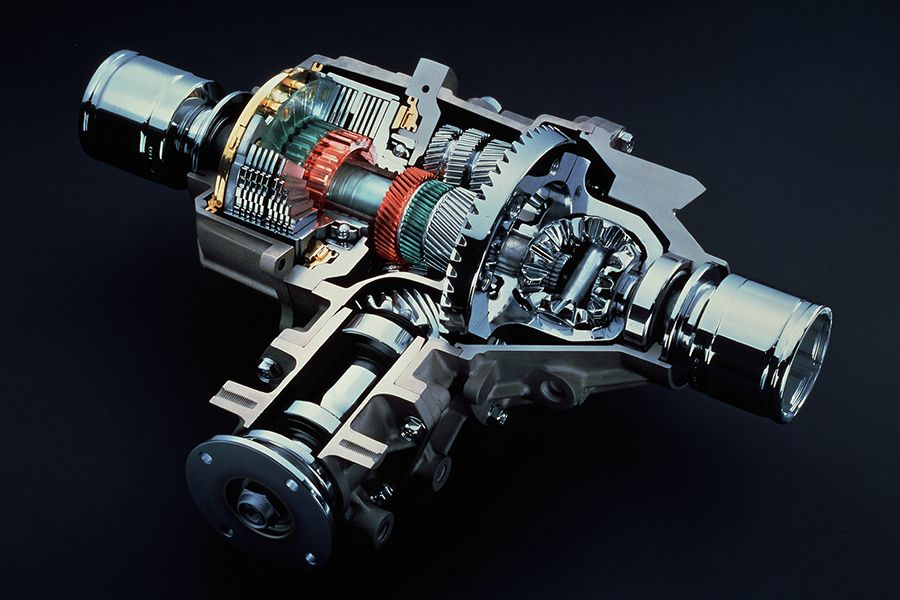
The Evo IV also proved its ultimate power in the WRC. Starting from the first race in the 1997 season, the car recorded 6 wins in 18 races. Just like the Evo III in the 1996 season, Tommi Makinen won the driver’s championship in the same year.
With such performance, the car was extremely popular from the launch. And although the Evo IV was treated as a limited production model like the previous models, the car ended up selling 13,134 units in total. This marked the best-selling model in the entire Lancer Evolution history.
The design of the Evo IV is clearly more sturdy than the first generation, and with the front bumper with built-in large fog lights, the car doesn’t look old-fashioned even today. It’s no doubt that the Evo IV became the best-selling Evo because of its typical design.
Since the model is now 25 years old and getting popular in the United States, its prices in the second-hand market are extremely rising. So if you want one, now is probably the last chance to get one in a good condition for a decent price.
The second generation of the Evo, starting with the Evo IV, is a model that incorporates all the elements that fans desire, such as a full range of equipment that is common to modern cars, an electronically controlled suspension, and a powerful 280 ps turbo engine.
Personally, I think that this generation is the most exciting Evo and I’ve been always thinking of getting my hands on it. It’s hard to believe that the Evo IV is now 25 years old, but it’s still a monster machine that makes you want to drive it.

